Saturday July 20th was International Bog Day but as Saturdays are my weekly chore day, I was busy gearing up for an almost-week all to myself, child-free and carefree of my regular routine of parenting rhythms. My annual spring cleaning procrastinated into a summer whirlwind tide of tidying in anticipation of the arrival of my twin and her first visit to Canada’s East Coast. In the basement of our rental home, I stood knee-deep in laundry, ticking off tiny boxes on a camp packing list for my teen bound for four nights away at an Adventure Earth Camp to foster youth leadership.
There was simply no time on International Bog Day to be mired by bogs or muck about my recent obsession with them. The summer was unfolding in a rapid-fire succession of days leaning into the learning curve of a new part-time position at a local university alongside reading and writing assignments sprouting from my recent enrolment in an MFA in Creative Nonfiction.
This spring and summer, I have begun to write a book on bogs and Bog People so I felt remiss in not properly acknowledging International Bog Day. June and July blew by me like the sails of the Bluenose at Lunenburg harbour.
Imagine my gratitude to discover that August 10-18 is Wetlands Appreciation Week dripping with events in collaboration with many eco-minded organizations, including Ecology Action Centre, Transcoastal Adaptations, Nova Scotia Nature, and the Mersey Tobeatic Research Institute, a chance to make up for missed opportunity.
I kicked off my own sodden song of recognition with a two-hour hike across an open bog at Polly’s Cove Trailhead along the Eastern Shore of Nova Scotia.
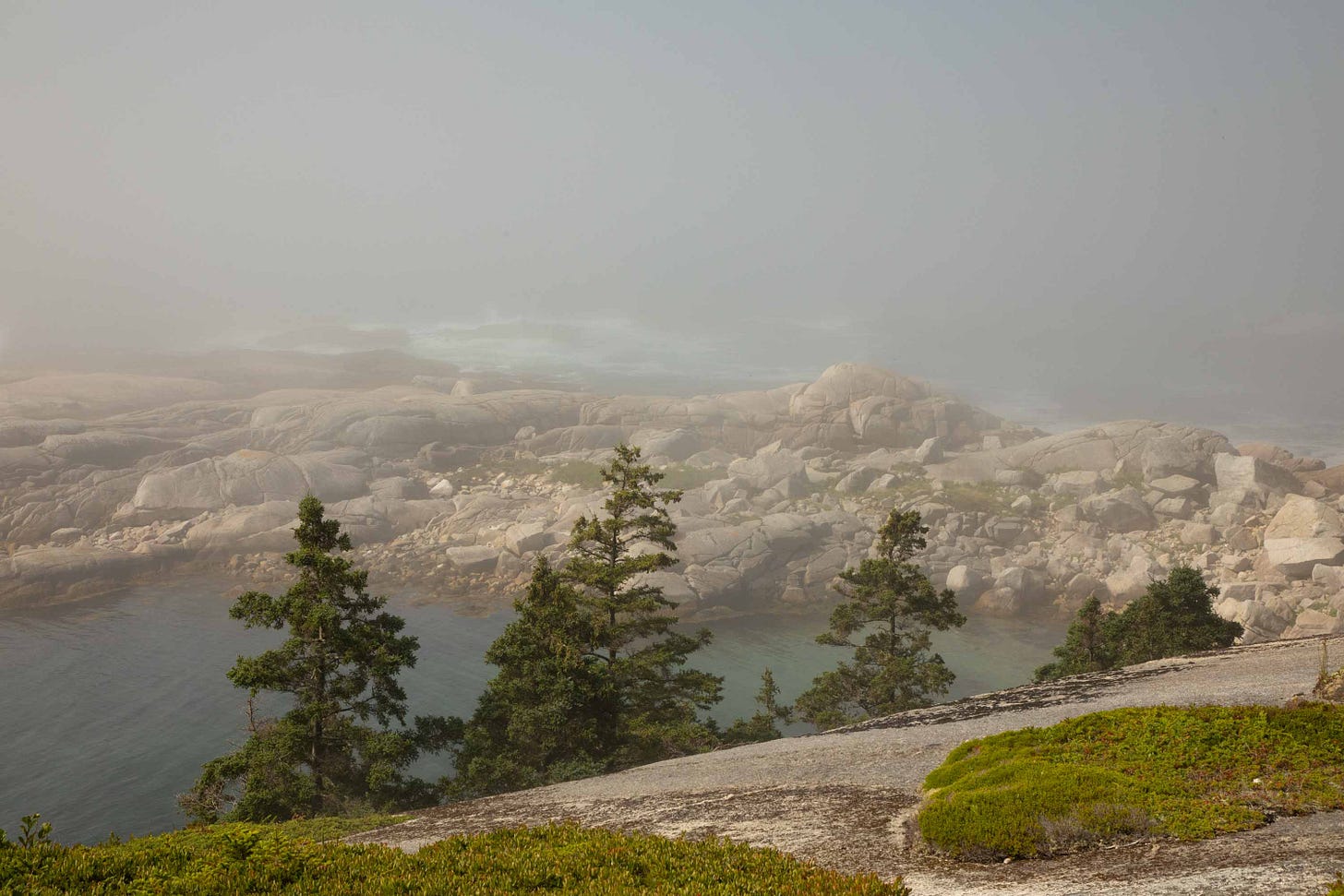
Early Sunday morning, I brew myself a coffee and leave my teen and our enormous guard dog drowsing at home as I drive along Trunk Road 3 towards Prospect Road. The sun is just beginning to rise, but its announcement is delayed by banks of Atlantic fog kissing the tops of trees as I navigate towards the Eastern Shore. I leave an hour before I need to because I don’t know where Polly’s Cove lies though I can tell by the map on my iPhone that it’s near Peggy’s Cove and that is where I head.
I arrive to Peggy’s Cove just ahead of the first tour bus winding snail-like behind me. I leap from my car to capture some photographs before this famous destination begins to crawl with summer tourists like a picnic cloth blackened with ants. I can hear the Atlantic wave hello, but it dances unseen like Salomé behind a gauzy veil.
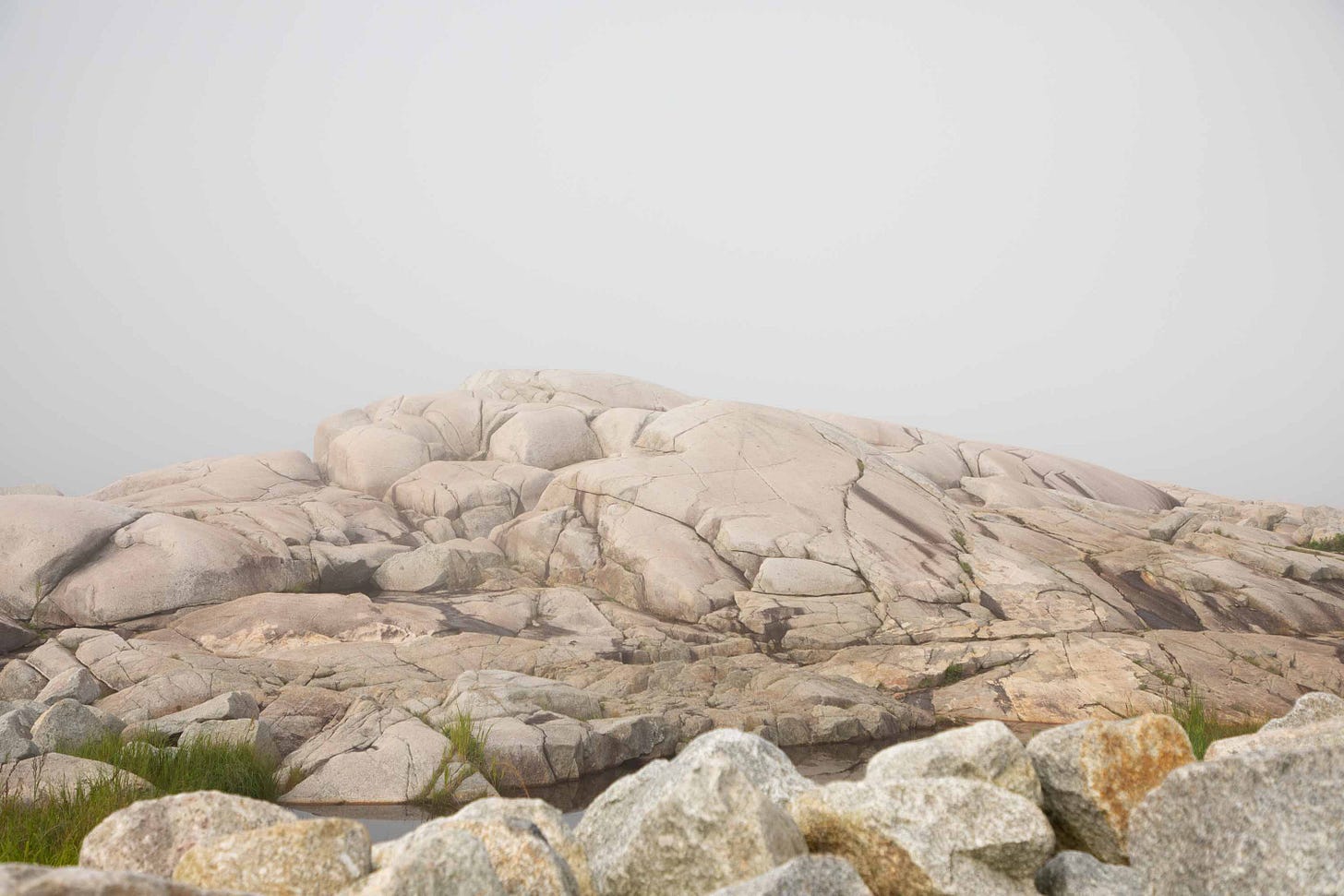
From Peggy’s Cove, I backtrack along Prospect Road to a spot I suspect might be the beginning of a trail I passed twenty minutes before. Sure enough, a small group emerges from their cars. I perform a U-turn and pull up on the opposite side of the road. Dr. Jeremy Lundholm will lead the hike. Lundholm is a botanist, plant ecologist, and former Professor and Chair in the Department of Biology at Saint Mary’s University in Halifax. He smiles and greets me as I approach. Smalltalk gurgles amid sips of coffee and water, the spray of bug juice, and lathering of sunscreen. Though our star has yet to penetrate the fog, my pale, Irish skin will burn the ruby red of maritime lobsters if I don’t protect it. I squeeze a generous dollop of lotion into the palm of my hand and massage my cheeks and the back of my neck.
Jeremy Lundholm is writing a book himself on The Barrens of Nova Scotia and including me, eight wetland-thanking wanderers join him here at Polly’s Cove Trailhead. Lundholm makes an unassuming plant genius in hiking shorts and sunhat, friendly and patient as we prep ourselves. An older couple has brought their small, black dog. A young woman places her toddler in a hooded baby carrier she swings upon her back and clips in place. I smile, recalling how I carried my own baby in a similar carrier over a decade ago. We wait a few more minutes to ensure no one else plans to join before Lundholm ushers us all up a winding path. No signs mark Polly’s Cove trailhead save for the well-worn walkway that invites us onto the open bog, one topography among many across the province classified under the Nova Scotia “Barrens.” My feet sink into mud as I meander and I’m glad I opted for boots over my Keen sandals for the journey.
The term barren belies the area we enter. As a survivor of infertility struggle, I know keenly the sting of this term. Perhaps it’s the reason for my personal affinity to bogs which are considered infertile environments. But as Lundholm explains, this open bog teems with life. On Lundholm’s tee spread the tentacles of an octopus, a good analogy we soon learn for the all-encompassing reach of his ecological and botanical breadth. He explains how the deep, rosy cups of pitcher plants are their own intact ecosystems, home to insects, microbes and fungi that make this plant a planet.
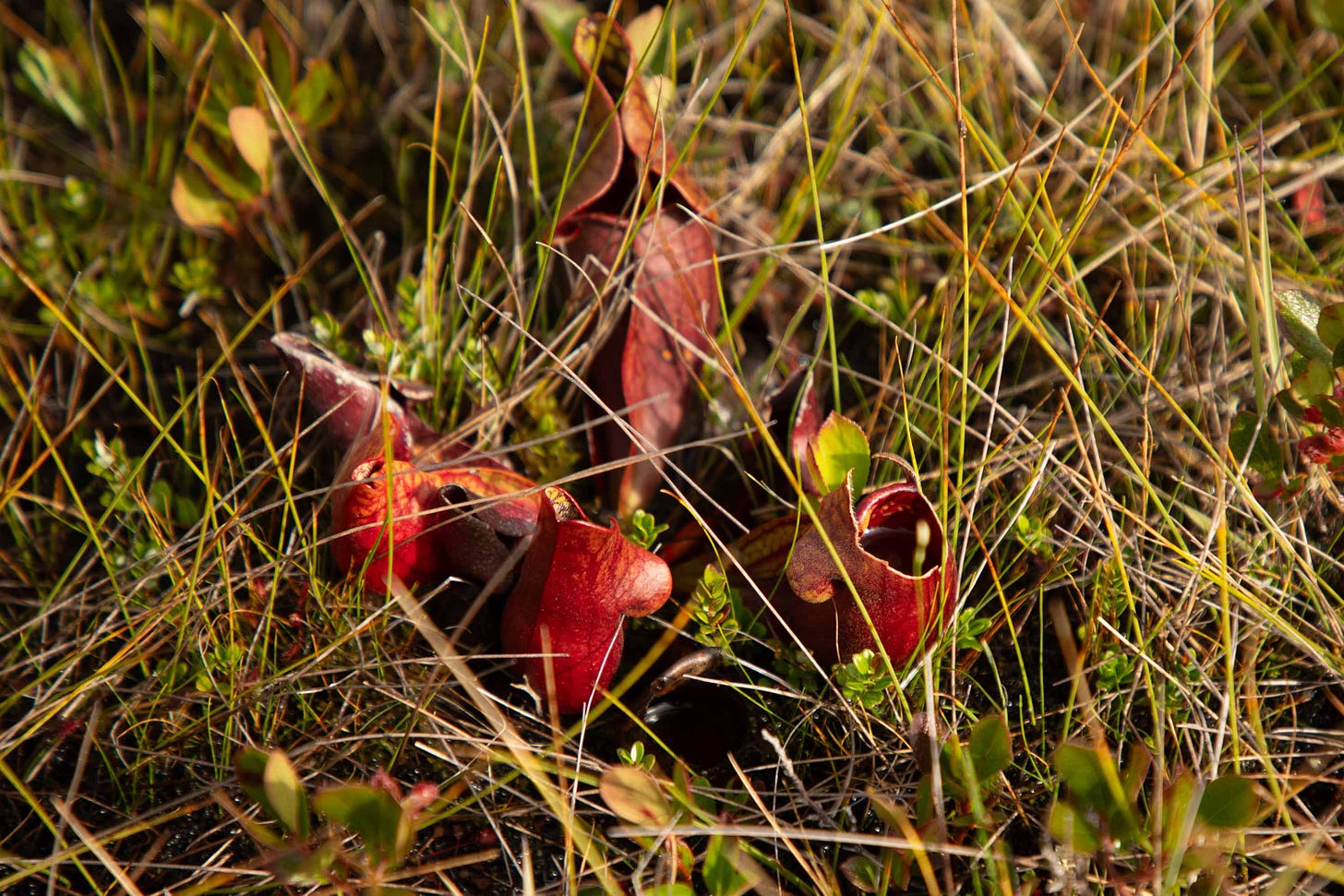
I ask Lundholm for the name of the bog we are hiking and he isn’t aware of one. So many bogs and wetlands paint the Nova Scotian landscape, they are perhaps too numerous to name. Bogs are freshwater environments, but here at Polly’s Cove, this bog sidles right up against the Atlantic coast. As I hike, saltspray cakes my lips like the rim of a lime margarita. I lick them and press on.
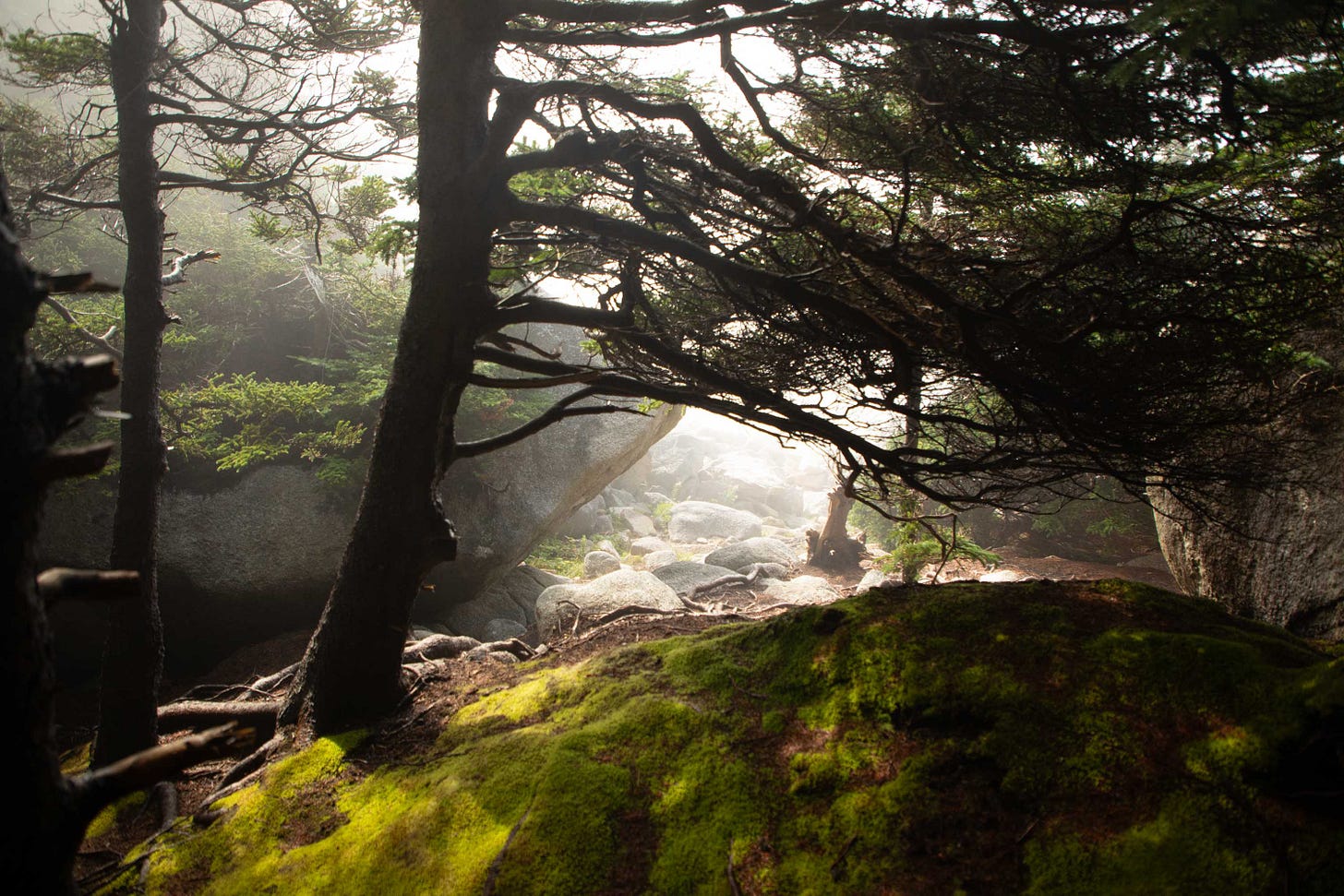
We snake into a mossy, forested copse on this mainly treeless scape. Granite boulders swept and deposited here by glaciers sprout trees and shelter more vegetation. Against the dark grain of wood, we spy the bright coral of Bunchberries and the rich, cobalt hue of Blue-bead Lily berries. Lundholm points out something called the “Twin Flower” and my ears perk up. My identical twin has just returned to Quebec. I must tell her about this plant which Lundholm explains flowers in June.
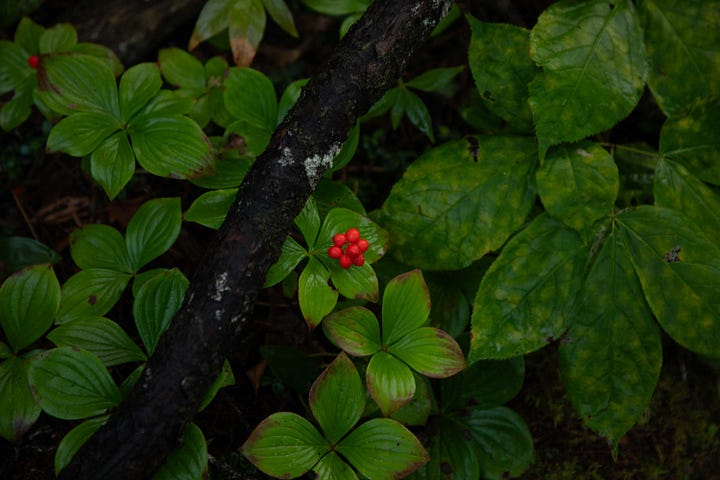
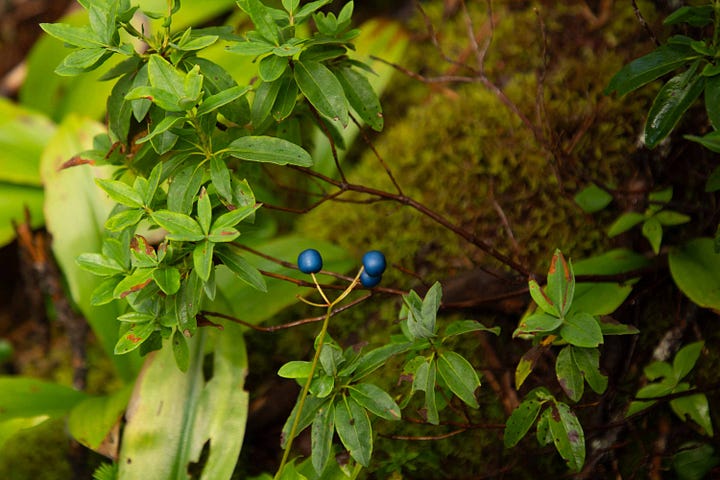
Our group emerges from the wood closer to the shore into sunshine and spray. We march to the vision of crashing waves and halt at the edge of a cliff. Far below lies the grassy sedges of a salt marsh, sibling to the spot where we stand in the Nova Scotian wetlands family that includes bogs, fens and swamps.
We climb higher and encounter the light pink of budding cranberries, too tart for eating in August. They’ll be ready for harvest closer to October. An academic colleague of Lundholm’s points out the miniscule, white petals pointing downward of a flower known as “lion’s paw.” We sit and gaze out upon the Atlantic. The sun has burnt away the remnants of the early morning mist and warms our backs as we rehydrate. Along the path, flat needles of creeping yew hug the rocks to bask in its rays with us.
On the bog, the occasional small tree reminds me of Japanese Bonsai. The environment is too harsh, saltsplashed and windswept for forests to take hold here. As we wind our way back to the cars, we come upon a White Pine horizontally humbled by the unforgiving environment. I think of the White Pines I’ve left behind in Ontario, the giants that tower over the treelines on the drive to Huntsville in the Muskokas and am shocked to witness this pine laid so low.
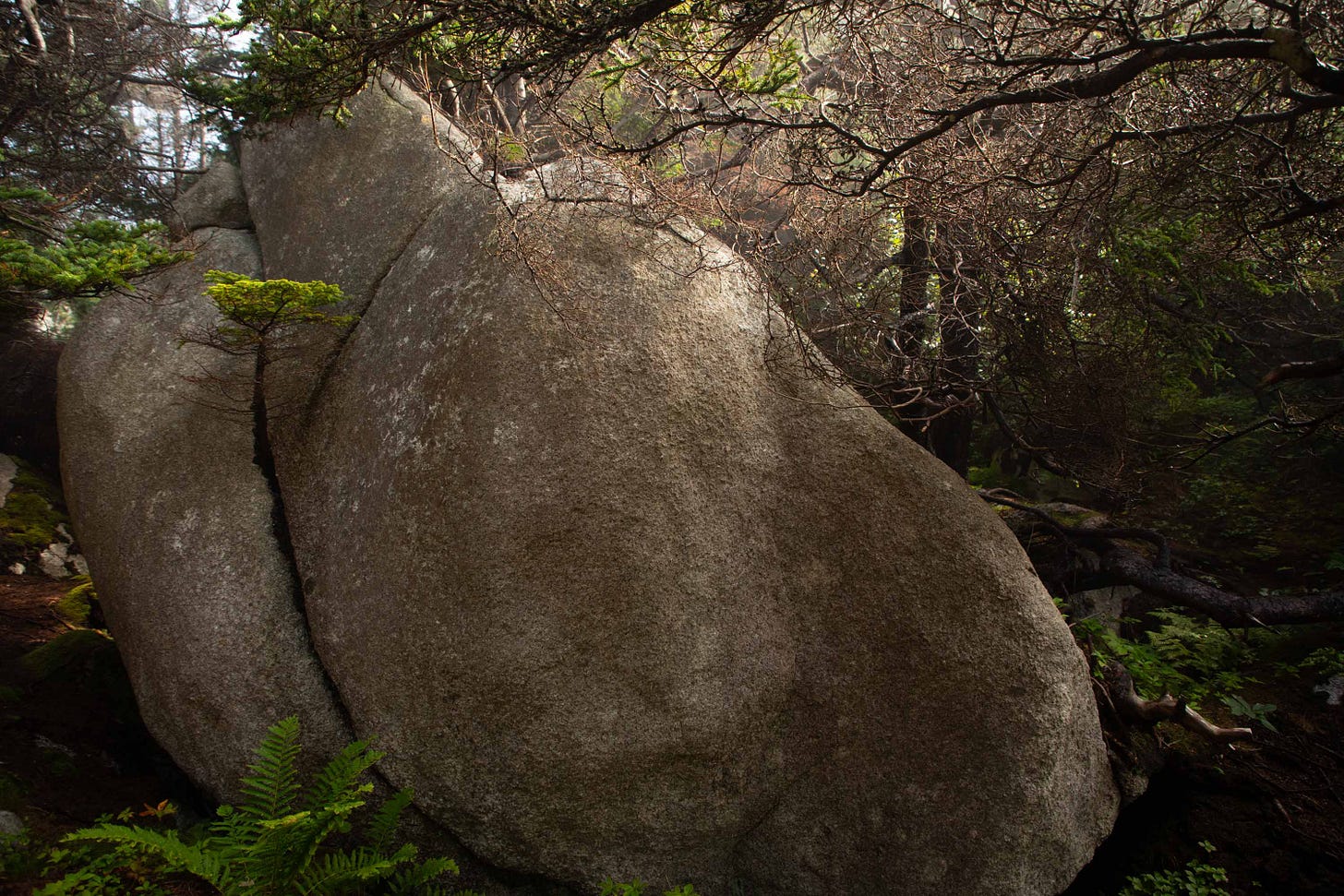
At hike’s end, we exchange contact info and bid each other farewell. My limbs ache but I am simultaneously energized by the experience. Like a pitcher plant, I’ve soaked up all I can. And like sphagnum moss, I become ever more rooted to this maritime environment, a place still new to me yet slowly, increasingly familiar. Wetlands Appreciation Week is an apt name. I feel grounded and grateful as I make my way home.




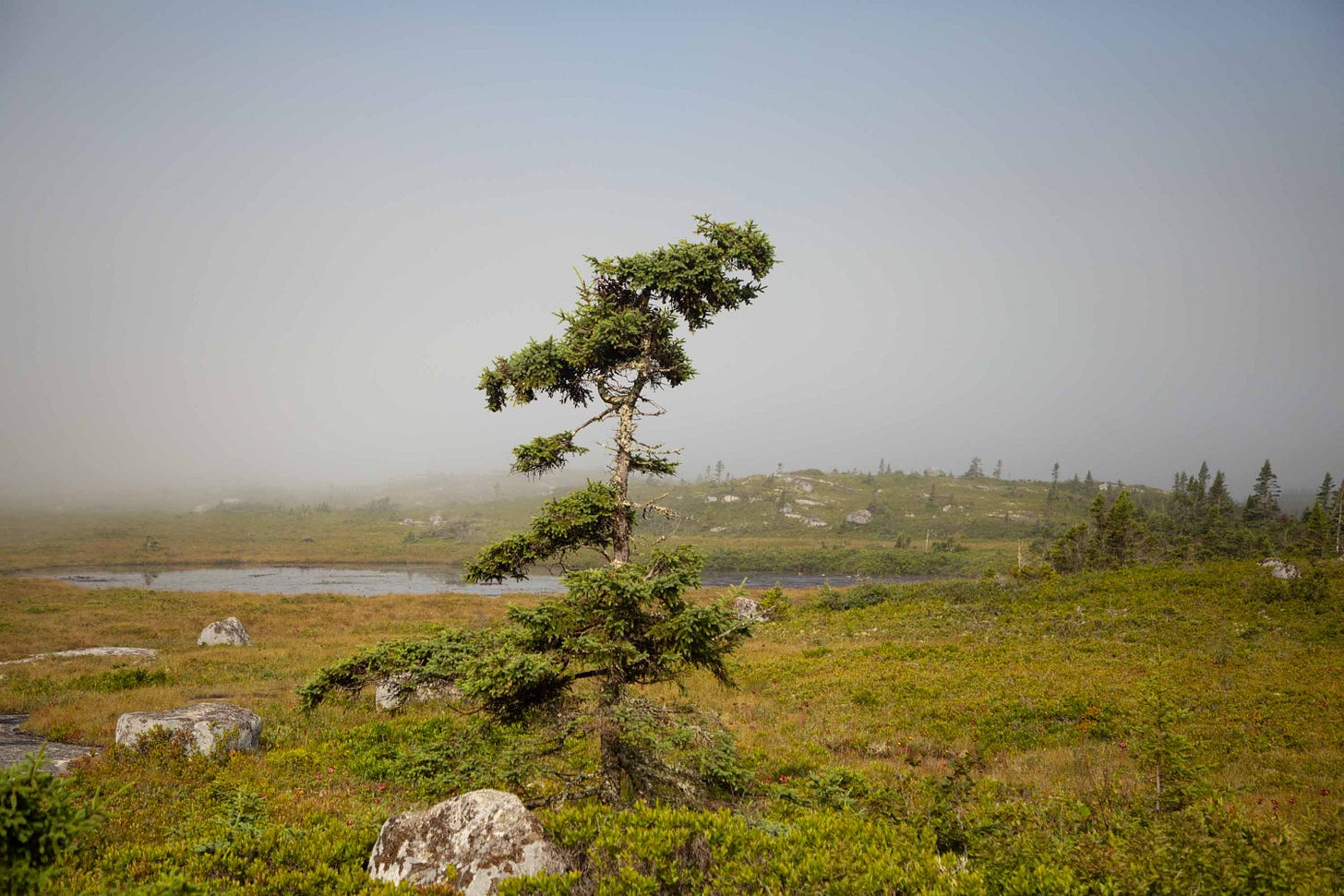
This looks and sounds amazing! Thank you for sharing!
Loved this Nancy. I was transported with you and the photos are stunning / I love the rock with the tree growing from it. Years ago I helped curate an exhibition on bog lands and bog people. I’ll try and fig the info out - it was the project of s writer/researcher who specialised in Jacqueta Hawkes , archaeologist and wife of J. B. Priestley. I remember there was a poem too by Seamus Heaney. Xx